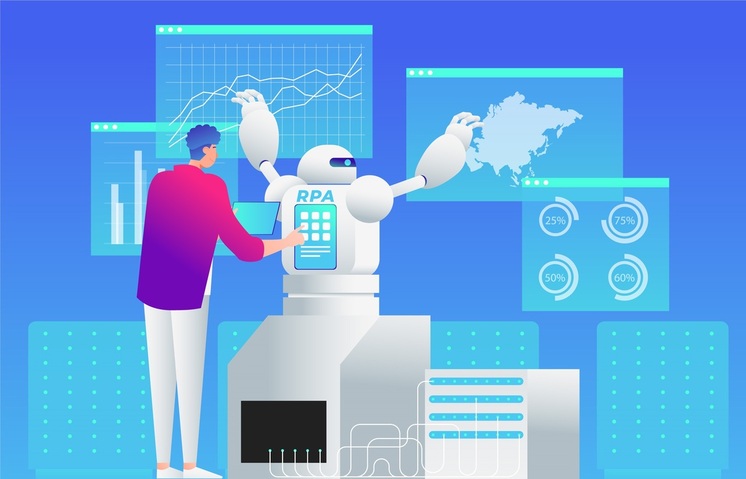
By Hew Wee Choong
Hew Wee Choong is the head of Asean Team, Cyclone Robotics, a leading provider of RPA software and solutions.

The digital imperative today is such that businesses have to adapt or fall behind. As a result, what we see among Malaysian companies is a race to digitise, with many harnessing the power of emerging technologies to outpace competitors, elevate customer experiences, and slash operational costs, reshaping entire industries in the process. And at the heart of this revolution lies a key transformative force: Hyperautomation, the integration of advanced technologies such as artificial intelligence (AI), machine learning (ML), and robotic process automation (RPA) to automate and optimize complex business processes across various domains.
The statistics speak for themselves: a staggering 91% of CEOs now view digital transformation as their top priority and a recent study showed that over 40% of companies in Malaysia currently adopt RPA. Among the reasons for RPA’s popularity are reported cost reductions of over 80% and a consensus about improved quality, accuracy and productivity.
Beyond the numbers lies a paradigm shift: the emergence of hyperautomation, a potent blend of RPA with other cutting-edge technologies such as artificial intelligence and machine learning, transforming the way we think about operational processes entirely. While RPA excels at mimicking human interaction with software, hyperautomation takes it a step further by building intelligent systems that learn, adapt, and optimise entire processes from end to end.
The Building Blocks of Business Agility
The widespread adoption of RPA and hyperautomation, along with its proven results are evidence that they are effective tools. But what is it, and what makes it work so well? Let’s take a closer look at its key components.
Essentially, RPA is a set of software that has been programmed to execute repetitive tasks. It can be built on top of existing software and this seamless integration is part of its appeal to adopters. The resulting “robot” can quickly and accurately do repetitive tasks like data entry and order processing which frees up human employees to do higher-value activities.
You may already be familiar with artificial intelligence (AI) – in the hyperautomation context, it is used to enhance work processes by analysing data, identifying patterns, and making decisions based on its own logic models. Meanwhile, machine learning (ML) is a subset of AI which is capable of analysing vast amounts of data while learning from experience and automatically improving its own processes over time.
Another key aspect that enables hyperautomation is process mining. This is a technique to analyse business processes by data mining event logs. The purpose of this is to fully understand and optimise these processes, and incorporate other technology like AI to make recommendations and further improvements.
These technologies, intertwined within the hyperautomation framework, transform the way businesses function. Sophisticated and adaptable, hyperautomation is a multi-system solution that leverages these technologies to execute end-to-end processes.
Hyperautomation in Action: Empowering Digital Transformation
Putting these components together, it is capable of building a 24/7 digital robot employee that handles high volumes of routine tasks such as back-office processes, attending to customer enquiries, processing invoices, managing data entry across departments and more.
This has meant significant changes in the industry which has traditionally relied greatly on manual data entry, requiring significant human intervention, resulting in issues such as introduced errors, data silos and challenges in scalability. For the forward-thinking adopters, the allure of hyperautomation lies in its extensive range of capabilities and complete automation which has been transformative to their processes.
Consider the example of the world’s largest commercial operation services provider grappling with mountains of manual work across finance, HR, and document management. Time-consuming tasks hampered their efficiency and accuracy, hindering their ability to scale. By partnering with us, they witnessed a remarkable digital transformation powered by hyperautomation.
Reconciliation of over 25,000 financial transactions became automated, saving a staggering 30,000 labour hours. Onboarding and offboarding of their 100,000+ employees became streamlined, saving some 100,000 labour hours and ensuring smooth transitions. Even document management saw a revolution, with electronic images archived automatically, freeing up resources for more strategic pursuits.
Our solution for the unique problems faced by this global enterprise was to build a RPA and Intelligent Document Processing (IDP) platform, offering an adaptable, unified solution that provides unparalleled support in the company’s digital transformation journey. The impact of this transcends automating work processes – seamless integration with existing systems eliminated data silos and fostered smooth information flow across departments. This newfound interoperability unlocked valuable insights for better decision-making, empowering the company to leverage the full potential of its data ecosystem.
Building upon that, streamlined processes translated to a faster response time and an improved visibility of customer needs. Increased transparency through automated workflows fostered trust and satisfaction. By minimising human error and ensuring consistency, the use of RPA and data analysis contributed to a smoother, more positive experience among customers and staff alike.
This is just one example among countless others. Success stories such as these are why the adoption of hyperautomation by businesses have become popular. It is highly valuable across industries as the resource mobilisation it affords has been instrumental in elevating the quality and innovation of products and services. As organisational risks evolve, it has also become a proven tool that bolsters organisational resilience by enabling early identification of crises and corporate flexibility to reconfigure resources1.
These aspects play a part in carrying transformational efforts by businesses of all sizes across the finish line. And a part of this success is the support and guidance from an experienced provider to collaboratively create a solution that works. With the right approach, hyperautomation can be implemented without major operational disruptions yet remain adaptable to evolving conditions and provide a whole host of secondary benefits beyond task automation.
For its adopters, hyperautomation has rapidly become the transformative key to unlocking innovation, operational efficiency, and resilience, empowering businesses to maximise the technology’s full potential.
Cyclone Robotics: Leading the Charge in Hyperauomation
As a frontrunner in hyperautomation solutions, Cyclone Robotics empowers Malaysian businesses to embrace the boundless potential of this technology. To us, hyperautomation isn’t just a tool for efficiency; it’s a catalyst for agility and transformation. Cyclone’s dedication to innovation manifests in cutting-edge hyperautomation solutions that complement existing systems, further accelerating the digital transformation journey for Malaysian businesses. It’s paving the way for businesses to thrive in the digital age, reimagining operations and empowering them to reach their full potential.
Embrace the Future Today
In our current time, digital transformation is no longer a luxury, but a necessity. Hyperautomation is a potent weapon for Malaysian businesses in their quest for agility, efficiency and success. In essence, digitalisation involves more than just embracing a singular cutting-edge system; it also encompasses the integration of existing systems through hyperautomation.
* The views expressed herein are strictly the personal opinion of the writer and do not necessarily represent the views of YamCha Time.







